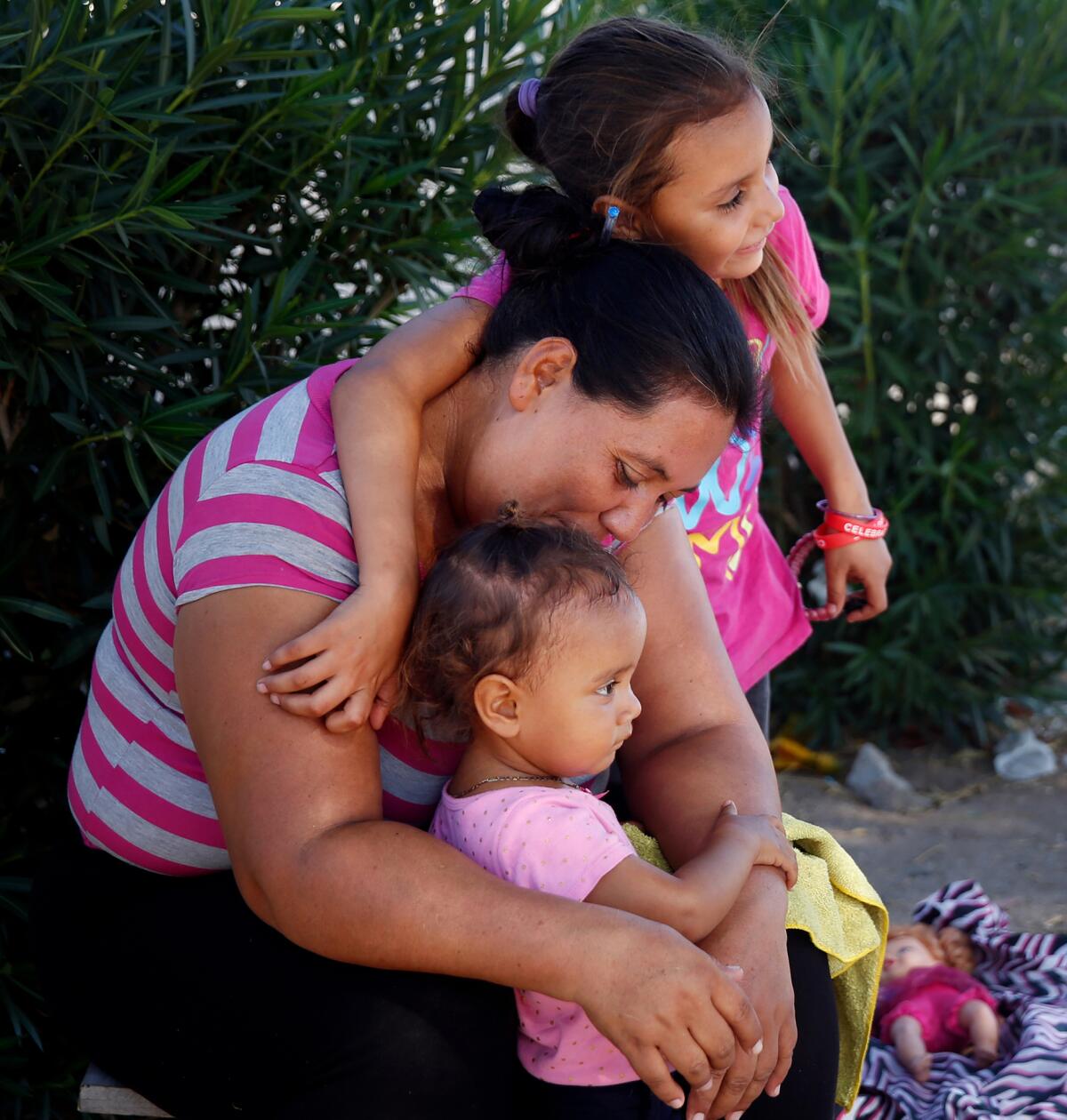The evidence is in: Trump’s ‘Remain in Mexico’ policy puts asylum-seekers’ lives at risk

- Share via
In the eight months since the Trump administration began implementing its euphemistically named Migrant Protection Protocols, the government has returned more than 35,000 asylum seekers to Mexico to wait out the slow legal process that will determine whether they’ll be allowed to live in the U.S. or be returned to the countries they fled.
Another 18,000 are biding their time in similar conditions under a separate “metering” policy that limits the daily number of asylum applications the government will accept at ports of entry.
As The Times’ D.C.-based immigration reporter Molly O’Toole reported Wednesday, those policies have forced thousands of asylum-seeking migrants to live in dangerous, squalid conditions in Mexican border towns, or to be dispersed to locations far from the border, adding to the hurdles they face in exercising their rights to seek asylum under U.S. law.
So far, a panel of the U.S. 9th Circuit Court of Appeals has been letting the “remain in Mexico” policy stay in effect based on its reading of how the law defines and treats different classes of migrants (yes, immigration law is weedy), even though one of the judges expressed concern about how dangerous conditions in Mexico were, and another wrote that the Trump administration is “not just arguably wrong, but clearly and flagrantly wrong” because the section of law upon which it based the “remain in Mexico” policy “does not provide authority.”
But as O’Toole reported, the government is playing fast and loose with the way it’s implementing the policy. For instance, the paperwork being filled out by many border agents for migrants being sent to wait in Mexico often lists the asylum seekers’ address as “general delivery” in whatever city the government is sending them to, making it nearly impossible for the applicants to receive court appearance notices. It’s unclear if the failure to include reliable delivery addresses is formal government policy, but since there have been so many of them, it seems at a minimum to be part of a concerted effort.
Why would government agents do that? Because Trump’s policy is to shut down the flow of asylum seekers, and if an asylum seeker misses a court date, she stands a grave risk of having the application denied and being permanently barred from seeking asylum in the U.S.
The stakes are incredibly high. And so are the dangers to which the U.S. government is subjecting asylum seekers — which should pique the interest of the 9th Circuit since it ruled that the potential harm to migrants if the policy were left in place while the lawsuit moved forward is less than the harm to the government if it were stopped.
The Human Rights First advocacy group tracked at least 110 publicly reported assaults, rapes, kidnappings and other violent crimes committed against asylum seekers in Mexico, which it said was “likely only the tip of the iceberg.” That’s clear evidence the Trump administration is violating federal law and international agreements that bar sending migrants to dangerous places, a policy known as non-refoulement.
In fact, the human rights group reported that the administration had returned more than 10,000 asylum seekers to Chihuahua state, south of El Paso and its neighboring Ciudad Juarez, a notoriously murderous city with a homicide rate exceeding 100 per 100,000 (in Los Angeles, the rate last year was 6.4 per 100,000). The region is so dangerous that the State Department warns Americans to avoid traveling there. The government knows it is sending migrants into the teeth of danger in an inhumane violation of law, yet does it anyway.
Some argue that there is nothing intrinsically wrong about sending migrants from Central America to wait in Mexico to learn whether they qualify for the protection of the U.S. government. But there is. These migrants aren’t asking Mexico for asylum, they are asking the U.S. for asylum. Their cases are being decided in U.S. immigration courts, and if they are to obtain legal help, it will be through U.S. lawyers and U.S. advocacy groups.
Forcing them to do all that from the other side of a border that the government will only let them cross to meet court dates (that it’s trying to avoid notifying them about) is a grotesque violation of due process and erects a hurdle that has no foundation in asylum law.
It needs to end.
More to Read
A cure for the common opinion
Get thought-provoking perspectives with our weekly newsletter.
You may occasionally receive promotional content from the Los Angeles Times.










